A baseball glove is an important investment for baseball players. Do you know how to choose one? How do you wear or fit your gloves for optimal performance? In this guide, we shall explore all the aspect of the baseball glove including how to choose your glove and differentiating it from a softball glove.
Secondly, have you ever wondered why baseball players like to finger out their glove? Does it give them an advantage? We will answer this question as we also share some of the best cleaning routines to keep your glove pristine and dry.
Finally, we’ll take you through the baseball gloves care tips that every player should know. Are you ready to learn? Let’s get started!
How to Choose the Right Baseball Glove
A baseball glove is a crucial gear to a baseball player, whether young or old, amateur or pro level. Therefore, it is necessary to consider several aspects of the glove before settling for one that is right for your game.
But first, you need to understand the making of your baseball glove. Once you understand the glove anatomy, then you can go ahead and match the versatile gloves to your playing needs.
Key Parts of a Baseball Glove
A baseball glove comprises of various functional components that serve different purposes as follows.
The Webbing
Both softball and baseball gloves feature different types of webbing for control, easy scooping of balls without picking up the dirt, better visibility, and maximum protection from direct sunlight. A baseball player has a choice of seven core webbing styles. You may encounter variations of these web patterns depending on the brand you choose.
These are the main glove web designs: –
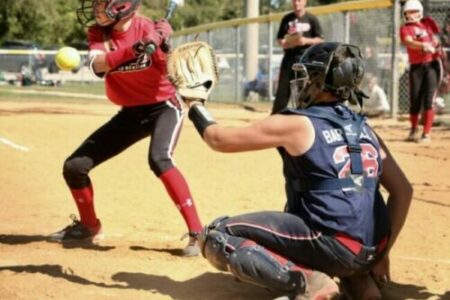
- Trapeze Web
If you are an outfielder, you need gloves with deep pockets and adequate visibility. The Trapeze web design provides you just that. It features the best pockets for a catch and shields your eyes from direct sunlight.
- Modified Trapeze Web
The outfielders, pitchers, and infielders look for a glove with more prominent steadiness. Hence, they opt for a mitt with a modified trapeze web. It’s leather strip on top of the mesh secures the glove.
- I-Web
I-Web has an open web design that lets soil and rubble fall off the ball, yet effectively shielding direct sunlight from fly balls.
In addition, such a design will not get caught during throws or fielding. Hence, it’s the perfect choice for middle infielders.
- Closed or Basket Web
Opt for either a closed web or a basket web glove when playing at the catchers, pitchers or sometimes the middle infielder position. Admittedly, this style gives the player suppleness crucial for a close while utterly hiding the ball in the glove.
- Two-piece Closed Web
The two-piece closed web has similar benefits to the basket web. But, such a glove is heavier, hence ideal for older players.
- Single Post Web
Gloves with single post webs are a favorite with first basemen. This style helps the player to consistently receive the ball by reducing unwanted spins, while swiftly securing his throws.
- Dual Post Web/H-Web
Are you a third baseman or an outfielder? You need a glove that you can see through its web design, especially for pop-ups. Hence, opt for a dual post web with a robust yet soft structure.
The Pockets
Baseball gloves are available with either shallow or deep pockets. This indentation in the palm area is what captures the ball. Shallow pockets help fielders to catch the ball, shift it to the throwing hand, and make quick plays.
On the other hand, deep pockets help in persisting onto fly balls or hard hits. Shallow pockets are ideal for infielders, whereas deep pockets work best for outfielders.
The Back
The back of the baseball glove is made of either an open-back or a closed-back design. Open back gloves have space right above the wrist fitting area. This wrist opening works best for infielders who want to move and turn quickly.
Likewise, closed-back gloves have no hole at the wrist adjustment. Instead, they use a hole for the index finger to linger outside the glove. They provide maximum support in seizing flys for the outfielders.
Materials
What materials are perfect for making baseball gloves? Well, whereas companies use treated leather, synthetic materials, or mesh, leather is the most favored material. It is a sturdy and comfortable fabric that breaks in with ease. Still, synthetic gloves are best for young players who want to explore with a light yet affordable mitt.
Here are the main varieties of leather used in making baseball gloves: –
- Premium Steerhide
The premium steerhide material originates from grown steers. Hence, the baseball gloves consisting of this material are firm and dense, an excellent choice for pro-level players.
- Leather or Cowhide
Gloves consisting of cowhide or leather are a pick with youth players. Such gloves have an average mass and retail in a pre-oiled condition. Hence, these gloves take little time to break-in. However, cowhide tends to deteriorate faster than steer hide.
- Full Grain Leather
A glove comprising of full grain leather tends to be heavy, hence, it may take some time to break in. Still, once it breaks in, it’s one of the most superior gloves you could ever get. And if you are not in a hurry to break in your glove, yet you are looking for a long term investment, this is your best pick.
- Kip-skin
Most high-end gloves use delicate and flush kip skin. This fabric is light, hence the best option for infielders who want to make swift transfers and snagging of the ball. Plus, the material breaks in with ease, much faster than a full-grain leather glove.
So What are the features to consider?
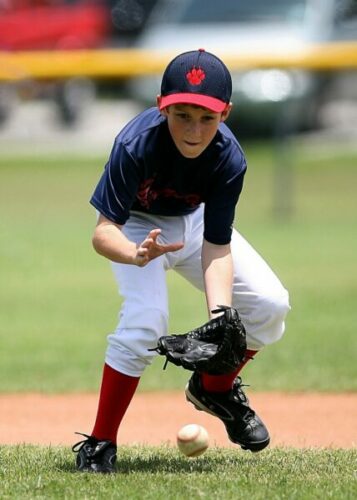
Comfort, Fit and Brand
Most baseball gloves are of lightweight leather finish. This material, coupled with a mesh back, is both comfortable and sturdy. Furthermore, having pretreated leather ensures it breaks in quickly.
Secondly, baseball gloves use Velcro, laced, D-ring fasteners, or buckle systems to achieve a snug fit. Hence, the player can readily wear or remove the glove at will.
Thirdly, there are numerous reliable brands with a history of providing functional, durable, and affordable gloves for all skill levels and positions. They include Wilson, Rawlings, Mizuno, and Nokona. Compare these brands based on their history, target market, functionalities, variety, additional features, manufacturer warranty, after-sales service, and budget.
Playing Positions
Whereas comfort, fit, and brand are crucial aspects in picking the right baseball glove for your position, these are not the only determiners. The following points also come to play: –
-
The Pitcher’s Glove
If you are a pitcher, any infield glove will work well for you. Such gloves conceal the ball nicely in the closed web while providing the best handgrip off the batter’s view.
-
Catcher’s Mitt
Consider your role as a catcher before settling for your ideal glove. First, you need to catch balls flying as exceptionally high speed, while looking out for your hand. Hence a well-cushioned glove is best for you. Naturally, it one of the most comprehensive gloves any player can have.
-
First Baseman’s Glove
Equally, the first baseman’s glove is a large and curvy gear, ideal for picking and scooping us balls from uneven surfaces. However, unlike the other gloves, it has on finger holes.
-
Infielder’s Glove
When playing in the infielder position, opt for a short and slender pair of gloves. Such a design facilitates the player’s swift reflexes on the field. Besides, the second baseman’s double plays turn out well as the player shifts the ball from one hand to the other.
When making shortstops, a player needs a more prominent fielding range. Hence, he should opt for more running gloves. Similarly, this option also applies to the third basemen. His gloves feature deep pocket and open webbing for a close-range hit and catch.
-
Outfielder’s Glove
An outfielder’s glove has deep pockets. It is the longest of all gloves. This design ensures the player tracks down fly shots and still check any balls from darting out of the glove. Effectively, it snags the balls, keeping them within the walls.
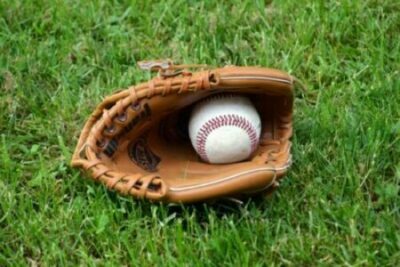
Other Factors
Padding
The glove padding is a must-have in every professional baseball glove. First, it offers the best hand protection from a massive impact. Secondly, it helps to improve and stabilize your grasp. This lining keeps your hand cool as you play. Therefore, as you choose your baseball glove, pick one with generous padding, yet does not impede your performance.
Heel
The lower part of the glove is its heel. This part varies in thickness to offer extra protection to the player while dictating the glove’s break.
Hinge
The hinge is within the pinky finger and the heel. It assists the player to open and close the glove with ease.
Wrist Adjustment
The baseball glove’s wrist adjustment technique ensures you achieve a snug fit around the hand. It also allows players to wear and remove the glove as they please. Typical wrist adjustment methods include Velcro, D-ring fasteners, and a buckle system. The wrist adjustment is an optional feature but is very popular with youth baseball players and softball players.
Lacing
Baseball gloves retail in diverse lacing styles. These laces determine the final shape of the gloves. Most gloves use leather laces due to their sturdiness and ease of break-in.
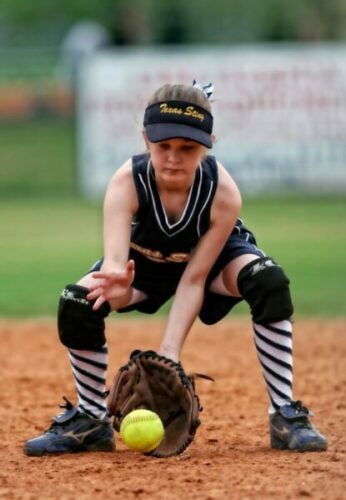
What Is the Difference Between Baseball and Softball Gloves?
Unless you are familiar with baseball, both the baseball gloves and softball gloves may appear and feel the same.
Nevertheless, are they similar?
Indeed, these two gloves may have a comparable range of color blends, straps, or use the same break-in technique. Still, four key aspects differentiate them. Let’s discuss them below: –
| Features | Type of Glove
Baseball Glove |
Fast pitch Soft Glove |
|---|---|---|
| Standard Size – The Main Difference |
|
|
| Overall Feel | The glove’s more prominent hand opening is suitable for bigger hands. Some have a soft fur-like lining for comfort. | Fast pitch Softball gloves have a smaller hand opening intended for female players. |
| Design |
|
|
| The Players | Prefer a traditional back with no Velcro for a loose-fitting | Prefer bear hugging Velcro straps for a custom tightness |
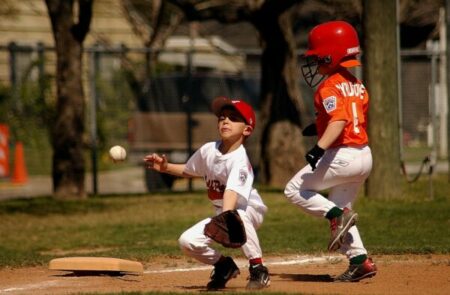
How to Clean a Baseball Glove and How to Clean the Inside of a Baseball Glove?
How do you care for and maintain your gloves? Eventually, it is this process that dictates how many seasons the gloves will last. The process entails the way you break in your glove, conditioning it, and keep it clean at all times.
In this section, we will go through the steps on how to clean your gloves and store them properly when not in use.
Keeping the gloves clean ensures its sturdy natural leather is not susceptible to deterioration. So how do you know when to clean your baseball gloves and the right way? Is it just about wiping off excess dirt? Here are the steps: –
Cleaning Tools Needed
- A brush
- A piece of soft cloth, cotton rag, or terry cloth.
- A leather cleaning agent
- An approved glove conditioner
The Cleaning Steps
Cleaning the Outside of a Baseball Glove
- Use either a piece of cloth or brush to get rid of excessdirt and sand from the glove.
- Repeat the process after a few minutes to ensure all the dirt comes out.
- Apply the leather cleaning agent as per the manufacturer’s instructions. Ensure you apply a little cleaning agent, for the shortest time possible. Rub in the cleaning agent in a circular motion. Let the glove rest for a few hours or as per the manufacturer’s instructions.
- Carefully apply and work the conditioner into the glove to dampen it. Ensure to get the conditioner in between the fingers and all the other hidden areas.
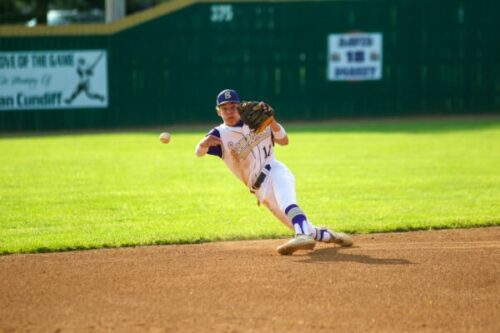
Cleaning the Inside of a Baseball Glove
Use the same procedure to clean the inside of a baseball glove like the one recommended for its exterior. However, the inside of a baseball glove is susceptible to mold growth. Hence, ensure it stays dry after a cleaning routine. Use an absorbent rag to suck out all the dampness.
Still, if you notice any mold growth, brush it off and use additional oil at the affected area.
Other Methods
You may also use a mixture of rubbing alcohol and water to clean your gloves. Here, measure a cup of rubbing alcohol and another cup of water. Mix the two. Dip your terry cloth into the mixture.
Rub the wet cloth against your gloves to get rid of all dirt. Be careful not to rub the alcohol on the glove for too long as it may damage the fabric. Condition the glove as per earlier instructions.
Getting Rid Of Stubborn Stains, Molts, or Dirt
When dealing with stubborn stains, hard-to-remove dirt or molts, repeat the washing step, but now using sudsy water. Such foamy water has enzymes that can easily break down stains from grass, mud, grease, and blood.
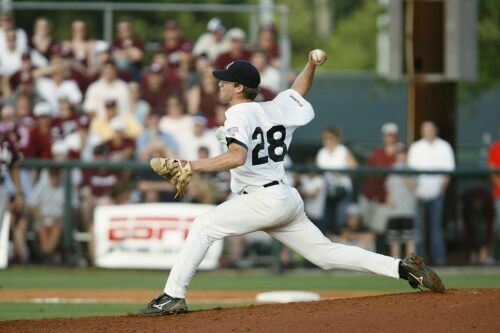
How to Store and Maintain Your Clean Baseball Glove
- As the off-season kicks in, store your baseball gloves in a cool, dry place. An ideal place should be in an enclosed area, away from your bag, heater, or direct sunlight. Also, avoid your car trunk or under your bed. Secure it stays dry at all times.
- During the baseball season, ensure your gloves are always dry. Also, wrap the ball in them to preserve the shape of the pockets.
- Always check for any signs of wear and tear. If you find any lesser cracks, repair them before using the glove again. Such patches include re-lacing any ripped laces. Get more baseball care tips in a later section of this guide.
Why Do They Wear Gloves in Baseball?
Whereas a player is under no obligation to wear a baseball glove during a game, this gear is a necessary part of the game. Surely, who would want to use bare hands to shield balls flying at 75-105 miles per hour? For, here is a summary of the reasons why you should wear gloves in baseball:-
Improved Grip
Batting gloves help in attaining a proper grip on the bat. Such a grip is inevitable when catching and fielding hits from a batter or a fellow player. Also, players wear gloves on the opposite side of their hands when throwing the ball.
This way, they can stop balls coming their way, especially during a shift.
Comfort
The leather fabric, webbing and general style of the glove ensure the player is content when handling the ball.
Safety
The glove has padding that absorbs shock from massive hits, hence, protecting the hand from injury. Both, it prevents the player’s hand from developing blisters over time.
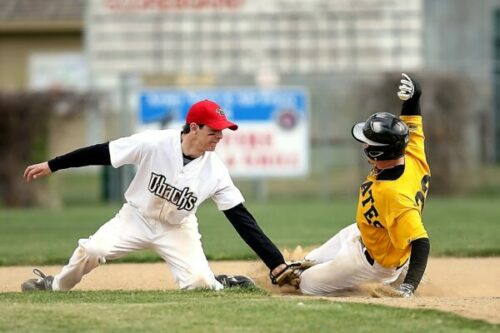
How to Fit a Baseball Glove to Your Hand?
Baseball gloves come in standard sizes and fit. Consequently, it’s not always likely to find a pair of gloves that fit your hand perfectly. You may need to break in your glove or use the adjusting straps to achieve a custom fit for your hand. How do you do this?
First, when buying your baseball gloves, select a pair recommended for your age bracket. Also, if you are a high schooler or an adult player, the glove size will vary in line with your field position. Surely, pick a glove ranging between 11”- and 11 ½”. Plus, if you are an outfielder, pick a mitt that is an inch higher than your infielder glove.
Equally, a 9”- 9.5” glove will fit an amateur player aged three to five years. Five and six-year-olds should use either a 10” or 10 ½” glove. The 10 ½” glove or an 11” one will fit a seven or eight years old perfectly.
Then, 11” or 11 ½” gloves will fit any player aged between 9 years and 12 years. However, first basemen players in this age bracket will use any 12” – 13” glove, response to the roving throws expected.
Secondly, once you have picked the glove fitting your age bracket and position, you need to try it on. As mentioned earlier, this is the only way to be sure you get a custom fitting glove for your hand.
Check and adjust the wrist straps to a snug fit. The glove should stay firmly without shifting. Hence, try removing it and see how easy or fast you get it off. Still, consider that after purchase, you may need to break in your glove; hence, it will be flexible afterward.
Are you satisfied with the custom fit so far? Next, confirm that it has a comfortable feel against your hand. It’s a crucial check for a child or an amateur player who is yet to master his glove control. That way, he won’t have to struggle with it slipping off during a game.
What else should you do to get a proper fitting glove for your hand? Compare gloves of different brands that have the same size, position recommendation, and feel. When purchasing your gloves online, plan to visit a local sports store and try on your preferred glove. If you decide to buy used gloves, then ensure they are in good condition. Precisely, check for and wear and tear on the leather or ties.
Finally, some parents tend to buy gloves that are slightly bigger for their children, hoping the children will grow into them with time. Doing so will only expose your child’s hand or face to injury, especially when it slips off as he plays. Therefore, opt for the exact fit for your child.
Why Finger Out of Baseball Glove
How do you wear your glove? A pro-level player aims at attaining optimal comfort while using his preferred glove. Hence, unlike popular belief, there are many variations to the way players wear their gloves. One favorite way is to finger out a baseball glove. Do you know why this style is the most preferred one?
A Little History About Baseball
Did you know that the first baseball players never wore gloves? Yes. They perceived it as being unmanly. In turn, when baseball players began embracing gloves, they used pairs that looked almost like the fingerless gloves for weightlifters.
But at the turn of the 20th century, glove manufacturers added padding and webbing while keeping all fingers separate. That meant that all players had to put each finger in its assigned hole. Today, all fingers are sewed together, hence providing variety for players.
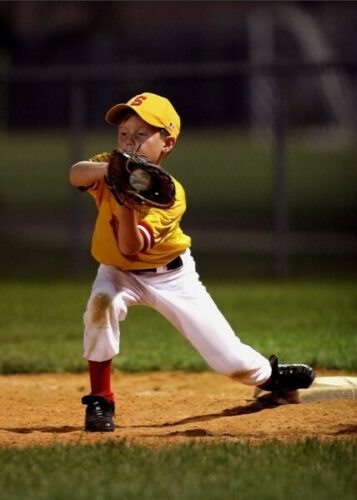
5 Reasons for Having a Finger Out of a Baseball Glove
-
To Protect the Fingers
Since the ’60s, baseball players finger out their gloves for numerous reasons. First, doing so determines whether they’ll end up with a sore finger or not at the end of the game. When a player fingers out his glove, he cushions his forefinger from a hard throw.
Back then, players would opt to put their finger directly outside, without using the holes on the gloves. Of course, this was not the proper way of wearing gloves.
-
To Control the Gloves
Today, pro-level players opt to squeeze their glove in the center pocket so that they achieve better control of their gloves. Now and then, they would press their thumbs and pinky fingers, resulting in a broader and compact pocket.
This style is not always comfortable. Hence, players often alter the way they wear their gloves and chose to finger out their baseball gloves.
-
To Lengthen the Gloves
As players finger out their gloves, the padding around the palms tends to stick out. Effectively, the glove would appear more distant, hence easier to compress as needed.
-
To Provide Extra Padding for the Index Finger
Sometimes, a player jabs one finger through the hole at the back of the glove while letting the other fingers to be in their shown spots, hence effectively cushioning the index finger.
-
To Create a Deeper Pocket and a Strong Outer Part of the Glove
Other times, the player may have both pinkie and fourth fingers at the pinkie slot, while extending the middle finger to the designated spot for the fourth finger. Also, his index finger stays where the middle finger is supposed to be. This way, the area for the index finger remains empty, forming a deeper pocket, while extending the exterior part of the glove. This style of wearing the glove ensures the player can swiftly snap shut his glove as he wills.

How to Dry a Wet Baseball Glove
Picture this. There is a sudden shower before your game is over. As long as there is no lightning or a massive downpour, the match will continue with the rain. This abrupt change of events means you’ll have a wet baseball glove that needs to be dry in time for the next game.
Likewise, there are times when the glove is not yet dry after wash, or maybe you forgot it in the backyard. How do you get it dry in time for your next game? Here are some few tips you can use: –
-
A Boot Dryer
Most boot dryers are quick and efficient in getting you baseball glove dry. These dryers use either a forced-air system or convection air to dry the gloves. In turn, they also kill any build-up of bacteria by drying them out.
A forced-air dryer will get your gloves dry in less than two hours. Though, it may use a noisy motor.
A convection dryer takes longer but is quieter. Still, ensure that your dryer is safe for use on the glove. Confirm with the manufacturer’s suggestions before using the dryer. Due to its ease of carrying, you can always include it in your gear bag as a precaution whenever you suspect a sudden change of weather.
-
An Oven On A Low Setting
Whereas you can use an oven on a low setting to dry your glove, be careful not to damage the mitt with excessive heat.
Alternatively, use the following steps
- Use an absorbent cloth to absorb as much dampness in and out of the gloves.
- Rub in an approved baseball glove conditioner. The conditioner will further wick out any remaining moisture in the glove.
- Leave the glove in the open, away from direct sunlight for a few hours. Then, pat-dry it using a towel.
- If the wetness has made the glove stiff, place the baseball into the glove’s pocket and wrap it with a compact string or rubber band. Let it rest until dries completely.
Baseball Care Tips
Since most baseball gloves are organic fabric, they tend to wear out with time. What can you do to keep your mitt in tip-top shape, ensuring it last for more seasons to come? Here are some tips you can use: –
- The best way to break in your glove is by letting it soften with time. Don’t be in a hurry to beat it, bake it, or even soak it in a solution. Such methods may damage the glove. Instead, use it as much as possible. In time, you’ll notice how much better it becomes.
- Take extra caution to protect the inner sections of your glove. Sweaty or dirty hands tend to degrade your glove with time. If you are struggling with getting your hands dry and clean as you play, ensure you wear a light batting glove before you put on your mitt.
- Create a regular maintenance routine for your glove. At this time, check and repair any loose laces, webbing, or fabric. Clean it, dry it, and store it in a cool, dry place.
- Use trustworthy products to clean, condition, and break in your gloves. Follow the manufacturer’s advice on the product to use, and the steps to follow in keeping your glove in sound condition.
Conclusion
Now that you know what entails buying, proper use and maintenance of your baseball gloves, are you ready to pick your ideal mitt? Use this guide as a reference to sieve through the various baseballs glove brands in the market. Also, it’s an excellent manual to ensure you properly fit, clean, dry, and care for your mitt. All the best!

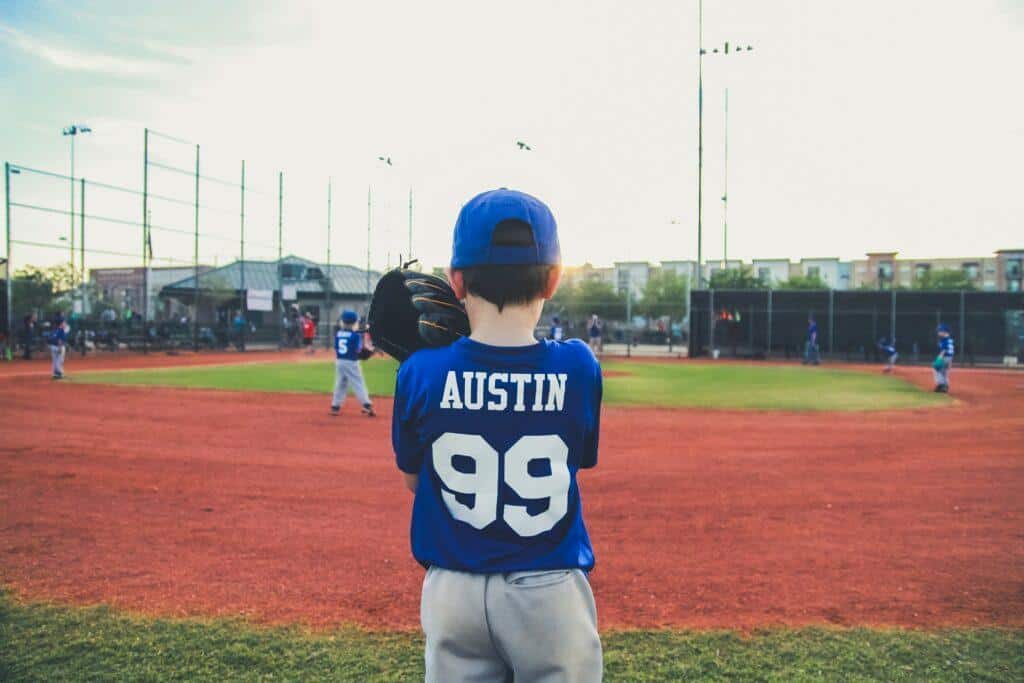
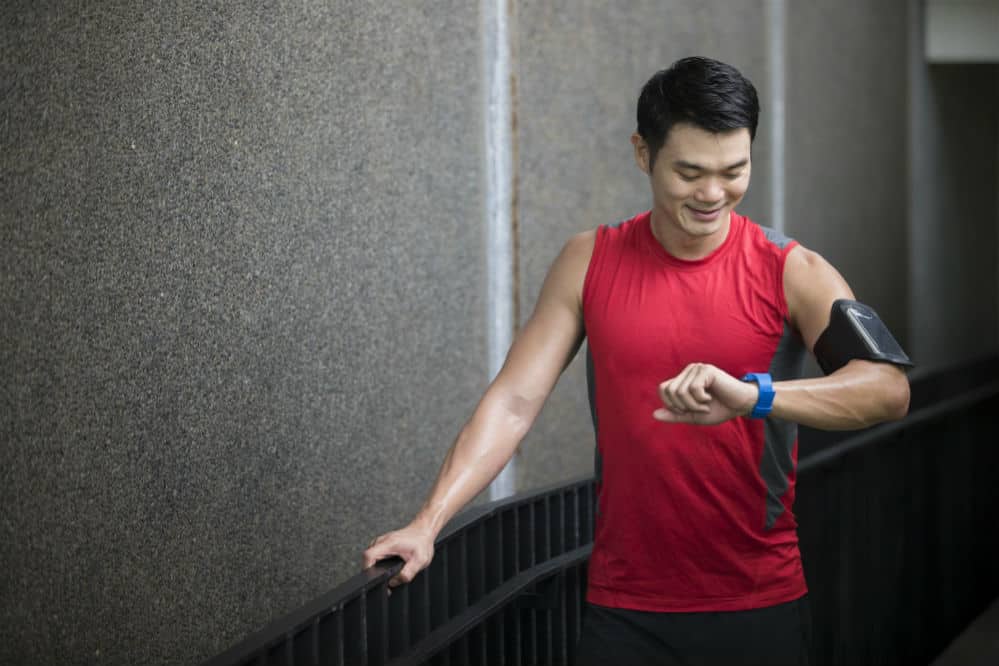
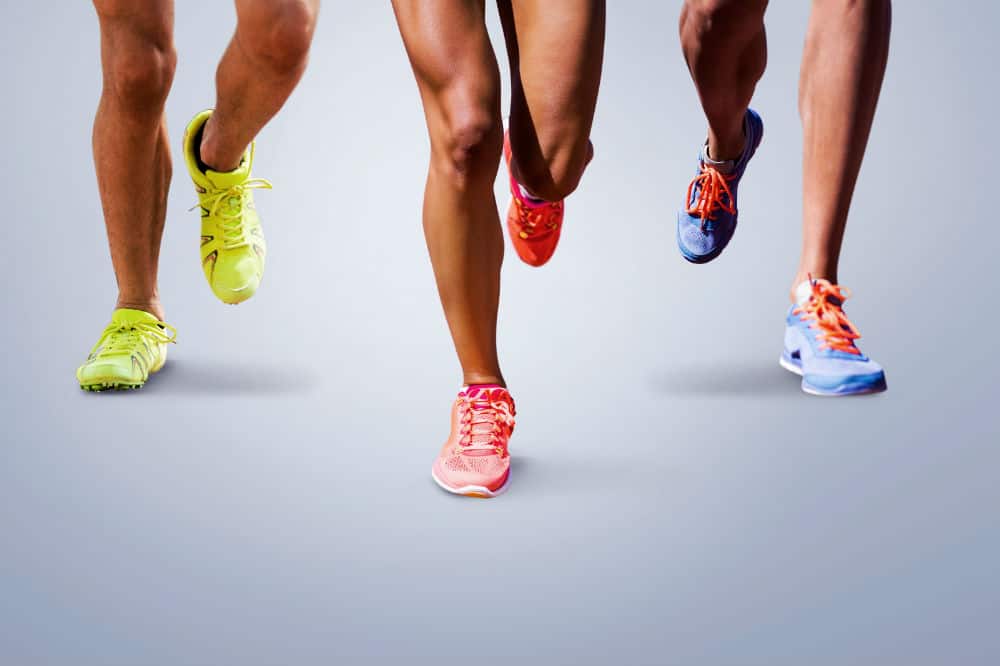
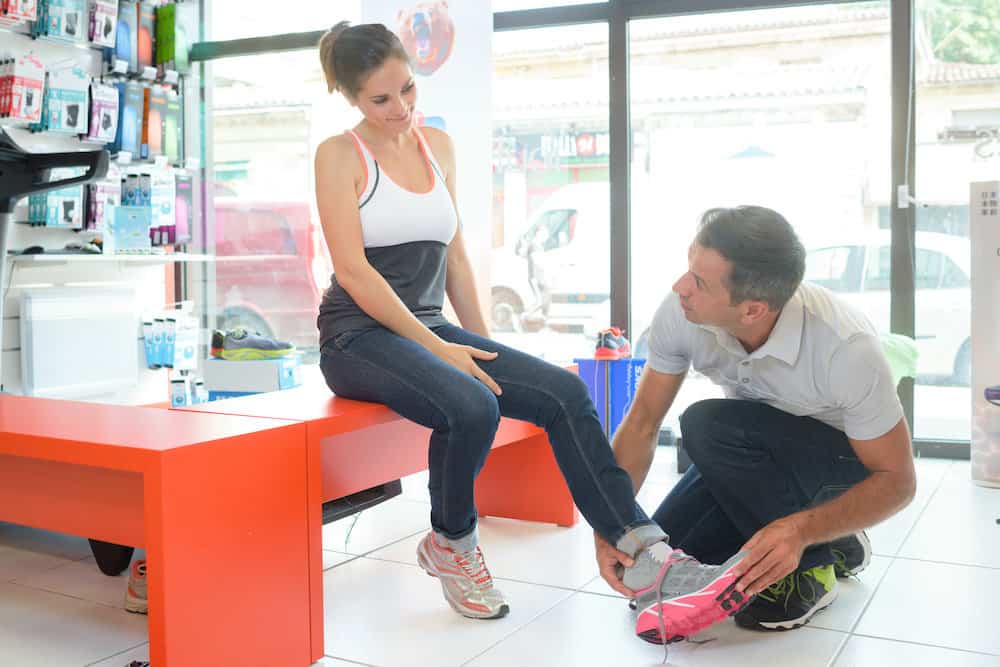

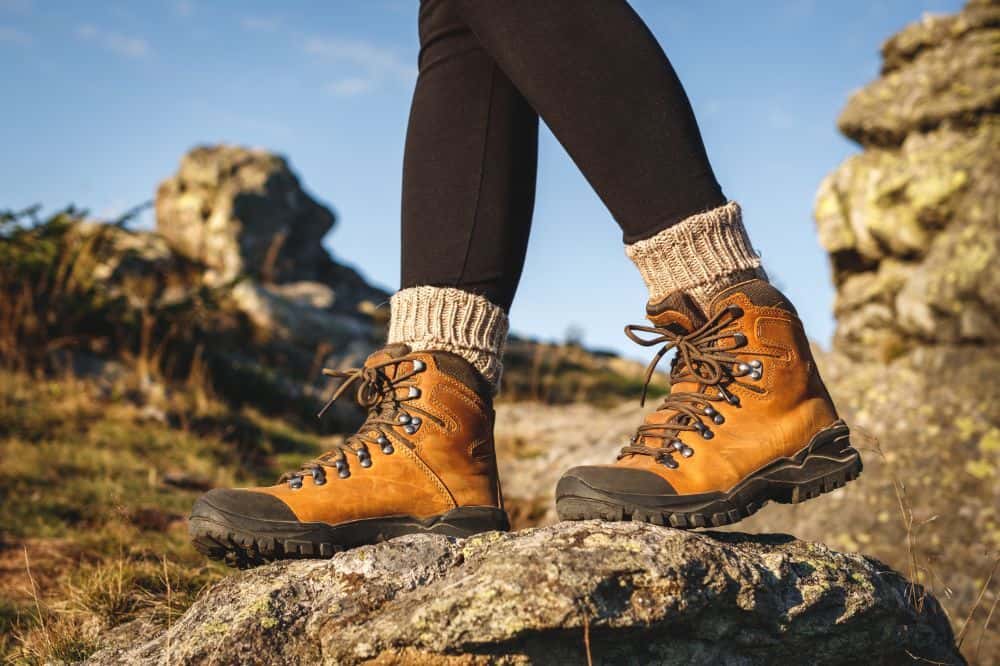
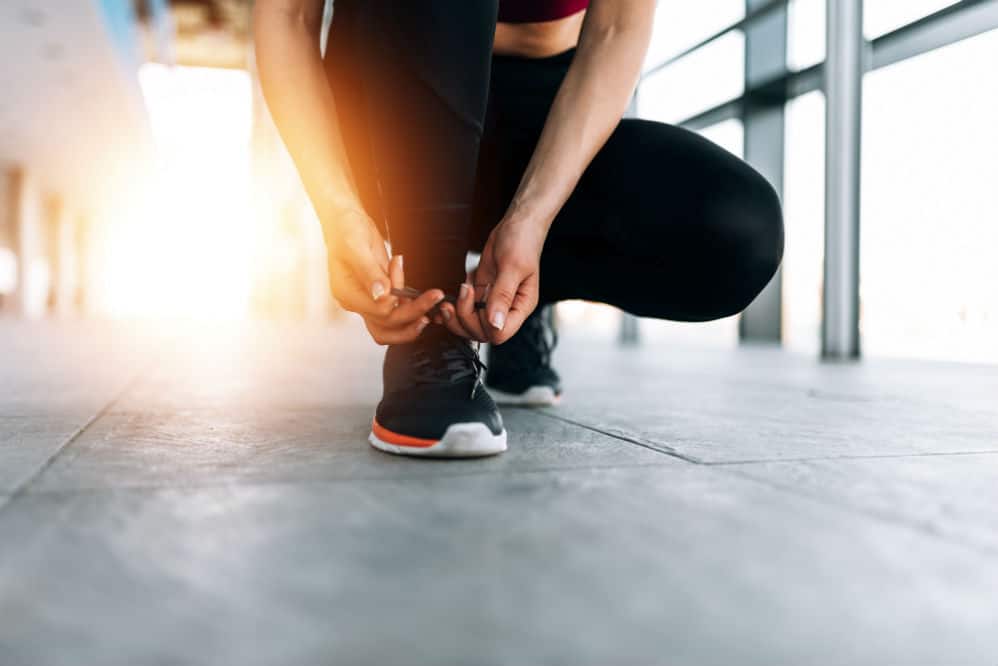






Wow, this is a very great post on all the details one needs to know the difference between a softball and a baseball glove. I don’t really know much about baseball gloves, but my brother is a big fan of the game, and he trains with a local baseball team here. I saw him arguing about this topic a few weeks back with a teammate. Well, I’ll share this post with him so he too can learn about the glove and know what to look out for when next he decides to buy a new baseball glove also. Overall, this post is well-drafted and beneficial. Beat regards!
Hello, Henderson, and thank you.
Thank you for your kind words.
Great to hear about your benefit of the article too.
Don´t hesitate to contact me if I can help you with anything else, or if you have any questions.
Wow! It is so interesting to read about baseball. Though I do not play the game, my husband is a team coach of a local baseball team, and my son plays it too. I know definitely that the baseball glove is very important to a player. It is funny to think a softball glove van works well as a baseball glove. It just doesn’t work that way. The constituent and the thickness of the baseball makes it way much more suited for the game and cannot be compared. Thanks
Hello, Tracy, and thank you.
Thank you for your kind words.
Great to hear about your benefit of the article too.
Don´t hesitate to contact me if I can help you with anything else, or if you have any questions.
Thank you for this article. You are really an expert on sports equipment. I never knew much about any of this. But I was wondering about the difference between a baseball and softball glove. Thanks for that great table to help lay it out clearly. I mean this article is practically an e-book in itself. That’s smart to wrap the ball in the glove to maintain its shape in the offseason. I hope baseball players will find your website. A very well written and helpful guide. After reading it, any baseball player will be an expert too.
Hello, Edward, and thank you.
Thank you for your kind words.
Great to hear about your benefit of the article too.
Don´t hesitate to contact me if I can help you with anything else, or if you have any questions.
My boy will be really excited to see me reading about baseball. Thanks for this really important post I am glad to have come across it, and it will help me in deciding the type of glove to buy for my son who is a big fan of God William. I would love to buy him a baseball glove. Any suggestion about gloves, let us say 100 dollars?
Hello, Chloe, and thank you.
Thank you for your kind words.
Great to hear about your benefit of the article too.
Yes, I have ideas about that. I wrote a review about great baseball gloves under 100 dollars like you are asking about in your comment. You can see it here.
Don´t hesitate to contact me if I can help you with anything else, or if you have any questions.
My child plays first base and then outfield, depending, so what would you recommend. I see different gloves are recommended, the first base glove with the single post web, and the outfielder with the dual post web design. Which would be best for both applications?
I can’t thank you enough for your article. I honestly never even realized all the different choices and uses for gloves, and now that we have this, I feel we are better equipped to buy the best glove we can for our child. Thank you so much.
Hello Babsie Wagner, and thank you.
Thank you for your kind words.
Great to hear about your benefit of the article too.
I
agree with you that it is important, very important, to have good gloves. And as you say, it needs to be right gloves looking at the position they play.
On
the same time, we need to have in mind that things can change with children, both positions and interest. So we should have that in mind and choose good gloves which don’t cost too much at the same time.
A few days ago, I wrote a review about the Akadema Rookie Series Youth
Baseball Glove Review. Many players who have started to use gloves from
Akadema has been so happy with it that they keep using it when they are older. And it is a reason for it because it is very comfortable.
Your
child can use these gloves both on first base and as an outfielder. You can see the review here.
https://sportssend.com/akadema-rookie-series-youth-baseball-glove-review/
The
Wilson A700 Baseball Glove Series is another glove I want to mention;
it is ideal for all positions! And on an excellent price as well. You can see a review about it here; it is the third glove I talk about in the review.
Don´t hesitate to contact me if I can help you with anything else, or if you have any questions.
It is an excellent guide on choosing and caring for a good baseball glove. The history of the baseball glove was fascinating as well as the reasons for fingering out a glove. Do you have a favorite brand of glove? It has been years since I played, but I always loved my Rawling glove. Thanks for posting!
Hello Christian, and thank you.
Thank you for your kind words.
Great to hear about your benefit of the article too.
There are many good brands on the market these days. But I have three favorites. It is Akadema, Wilson and, like you, the Rawlings! All of these brands are excellent.
Don´t hesitate to contact me if I can help you with anything else, or if you have any questions.
It is a fascinating and informative post.
I must admit that I never realized how much went into the making of these gloves. In fact, I found it quite a fascinating read, this post is in-depth, and you have gone into great detail and described every aspect of the baseball and softball glove, I now know everything I will ever need to know about the difference between a baseball and a softball glove and how much time and effort goes into making them.
Thank you for sharing.
Hello Russ Green, and thank you.
Thank you for your kind words.
Don´t hesitate to contact me if I can help you with anything else, or if you have any questions.
Hey, I don’t really know much about baseball gloves, but my brother is a big fan of the game, and he trains with a local baseball team here. It is funny to think a softball glove van works well as a baseball glove. It just doesn’t work that way. I honestly never even realized all the different choices and uses for gloves, and now that we have this, I feel we are better informed to buy the best glove we can for our child.
Hello, Deepanshi, and thank you.
Thank you for your kind words.
Don´t hesitate to contact me if I can help you with anything else or if you have any questions
Very well written. I didn’t know before that there was a difference between baseball and softball gloves. I found your comparison chart really helpful to see the differences between them. My dad used to play softball all the time when I was younger, and I wonder if he knew there was a difference. I think he just picked the first glove he could find and didn’t really give it much thought.
Hello, Sam, and thank you.
Thank you for your kind words.
Don´t hesitate to contact me if I can help you with anything else or if you have any questions.